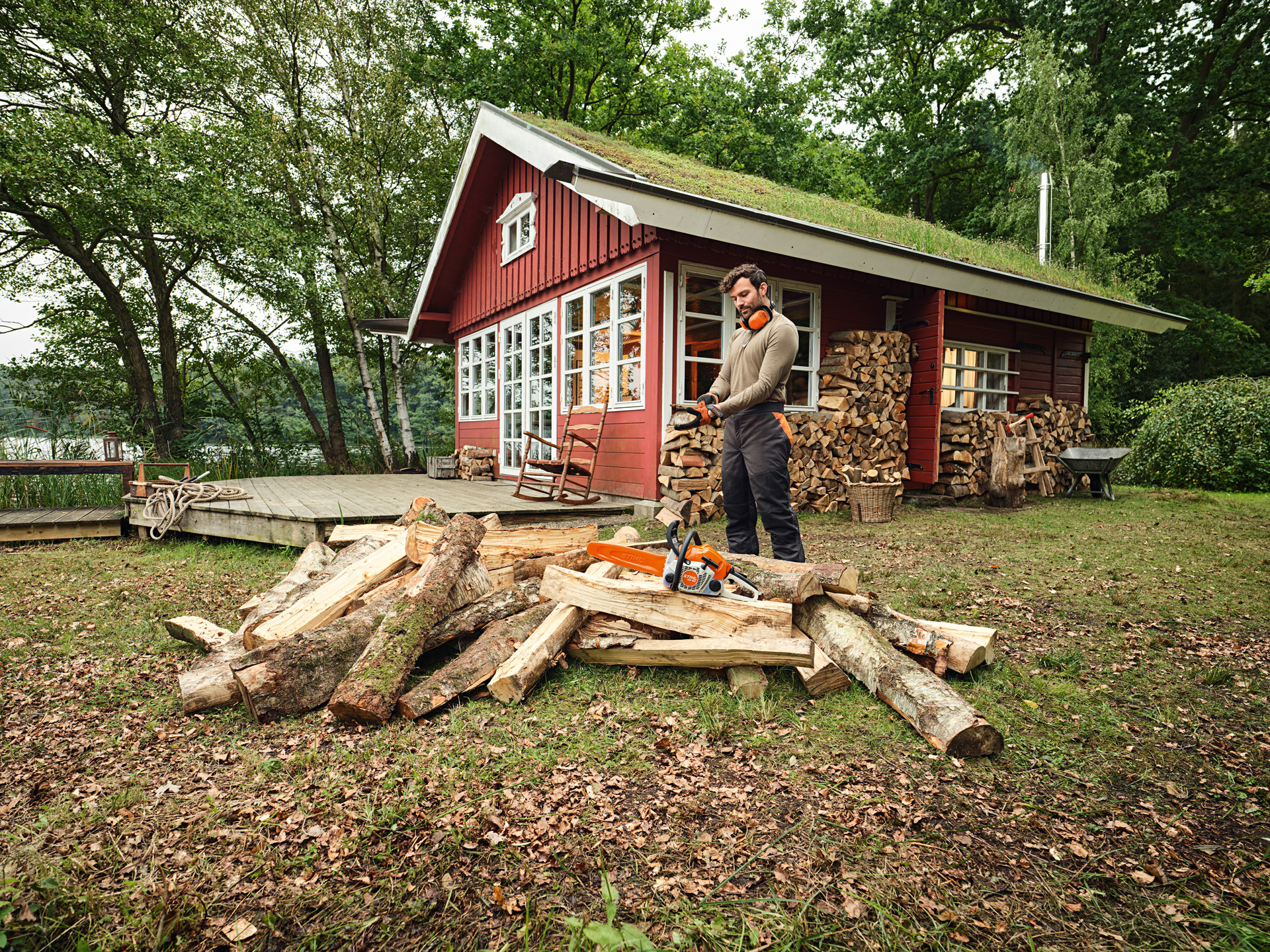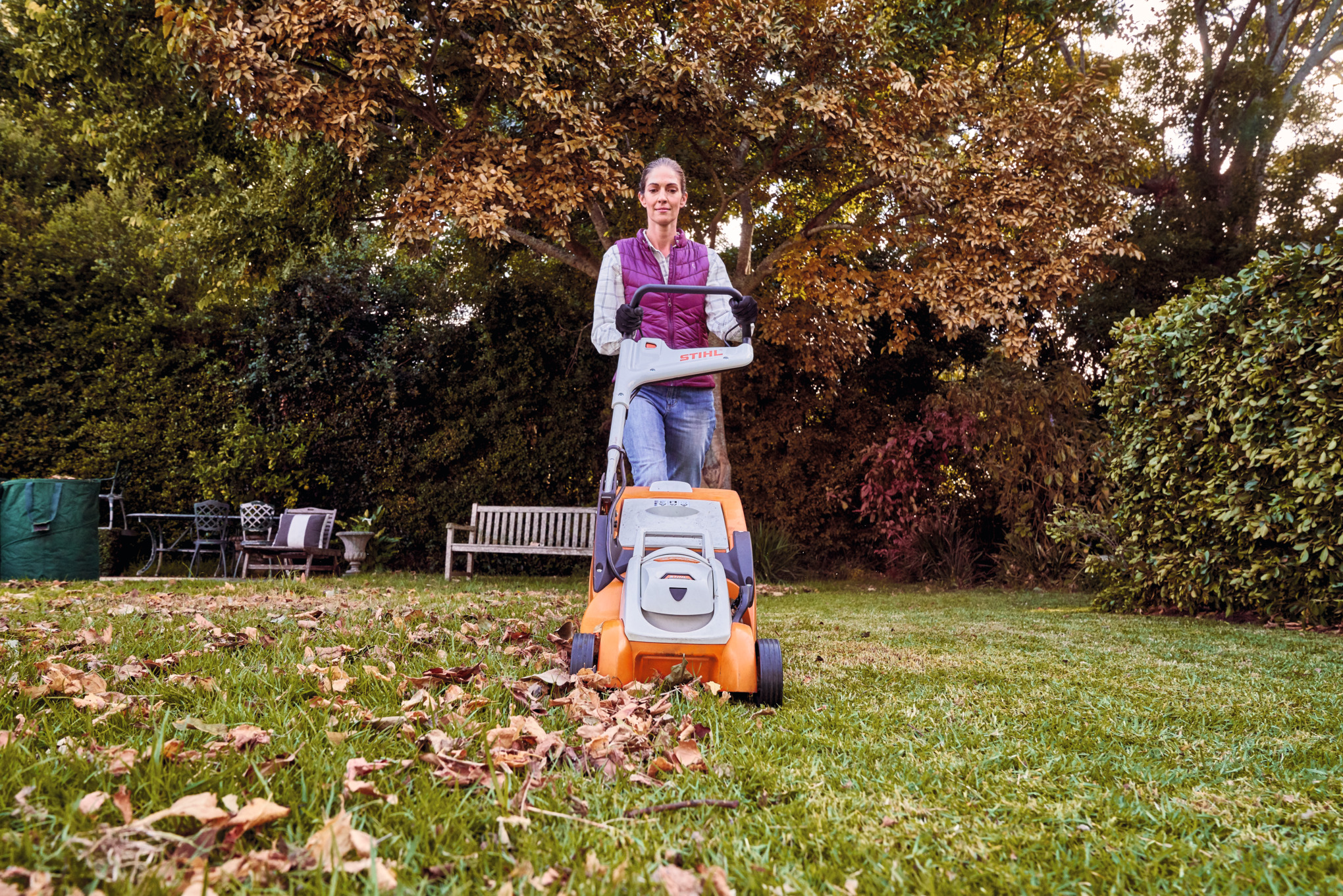Lawn mowing hacks
Keeping your lawn looking lush doesn’t need to take all of your time and energy. With a quality lawn mower and some basic know-how, you can have the best looking lawn in the street. Here are five hacks to add to your lawn care routine.
16.02.2024

SHARP BLADES EQUAL A HEALTHY LAWN
It might surprise you to learn that mowing with dull or damaged lawn mower blades can actually wreak havoc for your lawn. Not only do they leave your grass blades looking frayed, messy and, put simply, a bit shaggy, they can also expose your lawn to open to pathogens and disease, which, if left untreated, can cause some serious damage to one of your home’s biggest assets.
It’s also important to note that frayed grass blades struggle to absorb and retain moisture, so even though you may be watering your lawn religiously, it may not be reaping the benefits from a big drink at all.
We don’t recommend sharpening existing mower blades as there is no sure way to ensure this is done evenly on both sides. Replacement blades are the only sure way to take care of both your lawn and your lawn mower. Replacement blades are available at your local STIHL Dealer, and are incredibly simple to changeover.

DO A HEIGHT CHECK
The height of your lawn mower should change throughout the seasons. In winter, it’s important to leave a little bit of length to your lawn for a number of reasons. The first reason is that you want to protect the root system from frost. You also want to maximise the amount of surface area of each grass blade to make the most of the sunshine that is typically scarce during the cooler months. You also don’t want to ‘shock‘ your lawn when the weather conditions aren’t favourable.
During the seasons that we do experience more growth than others, it’s ok to drop your mowing height right down. Doing this will actually encourage growth and give your lawn that lush look and feel that we all try so hard to achieve. However, as the temperatures really start to spike over the summer months, you need to ease off a little. Mow lightly and frequently during these months, followed by a big drink. STIHL mowers offer sever different height settings which are adjusted by a single lever making it incredibly easy to adapt to the season.

TRIM, TIDY, THEN MOW
Trimming your edges with a grass trimmer is messy work. Especially during the warmer months when your lawn is nice and lush and your fence line practically disappears. And once you’re done, your edges might look great, but your surrounding paths are likely covered in grass clippings.
Don’t fret – this is an easy fix and you’ll probably wonder why you didn’t think to do this earlier. Once you’re done trimming, grab your blower and shift all of the grass clippings back onto your lawn. This way, you’ll collect them all up with your mower keeping your surrounding areas nice and tidy and your lawn free from clippings (and little feet and paws which will ensure they don’t make their way into the house!).

TO CATCH, OR NOT?
This is likely a decision that will be driven by the state of your lawn and the time of year at which you’re mowing. Obviously a catcher is going to be a much better option if your lawn is long and there’s a lot of grass to be cut and collected. However, if you’re in the habit of mowing your lawn frequently and only cutting a small amount each time you mow, then you might consider leaving your catcher in the shed. Why? Used sparingly, grass clippings can actually be used as a mulch and a natural fertiliser for your lawn.
With that said, it’s important to regularly remove the thatch from your lawn. Lawn thatch is a mix of dead and living plant material which has built up over time. It’s a combination of leaf litter, lawn clippings, and just general debris from your garden which build up over time, forming a thin covering on your lawn. While a little thatch isn’t necessarily harmful, too much can suffocate your lawn and if left alone, it can have the same impact as compacted soil, and prevent vital nutrients getting to the roots of your lawn. This can be done manually with a rake, or a scarifying machine which will take you less than half the time.
If you do decide to use a catcher, don’t throw those clippings away! Add them to your compost pile along with other clippings and debris; even scraps from the kitchen!

CHANGE DIRECTION
It’s human nature to want to do things in an orderly manner. However, when it comes to your lawn, changing up the direction in which you mow each time will actually encourage your grass blades to grow nice and straight. If you’re constantly mowing in the same direction, such as left to right or right to left, your grass blades are going to grow that way too. Mix it up, mow in a different direction each time. This is a great way to get your lawn looking nice and uniform, particularly in the warmer months when we’re mowing more frequently.


